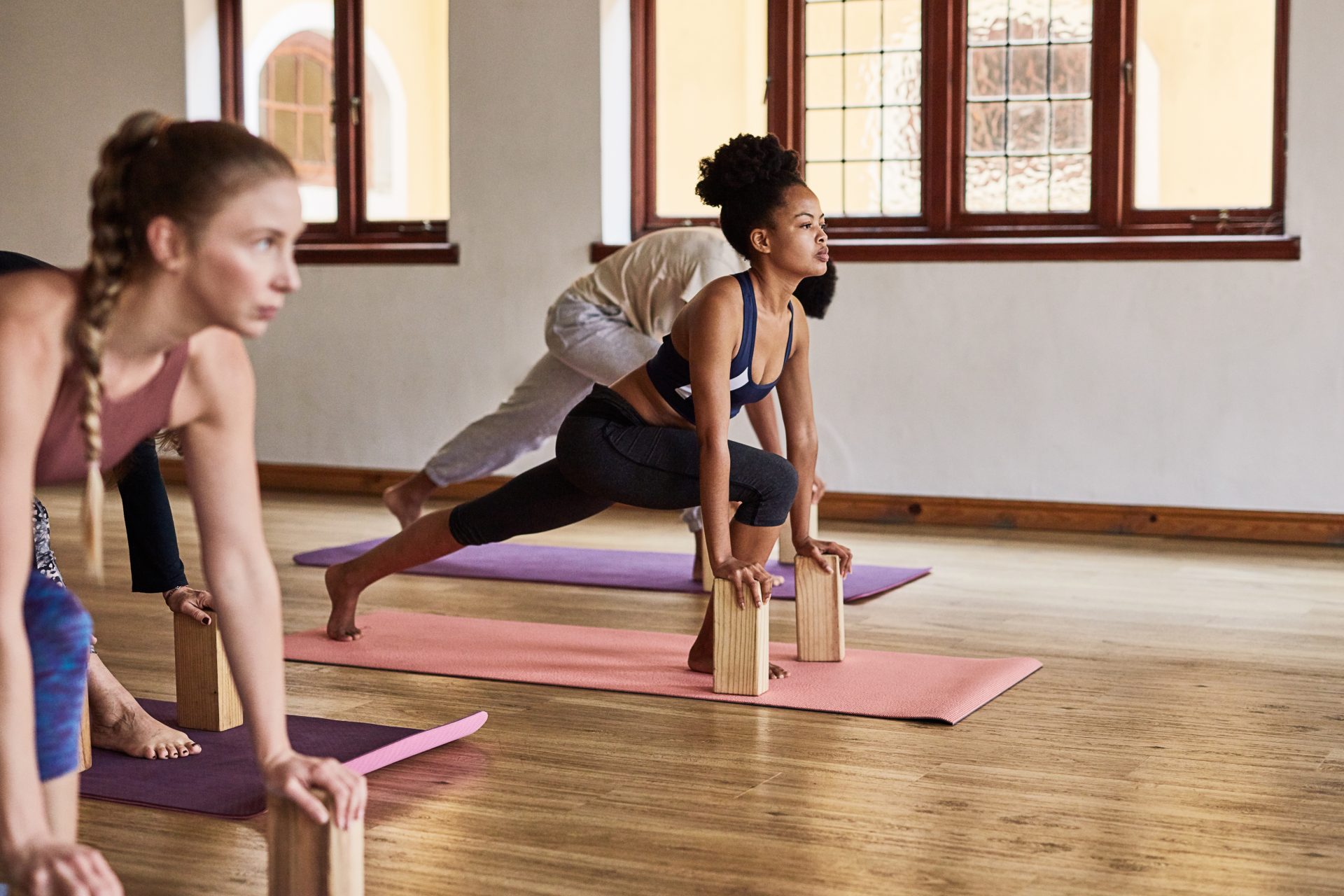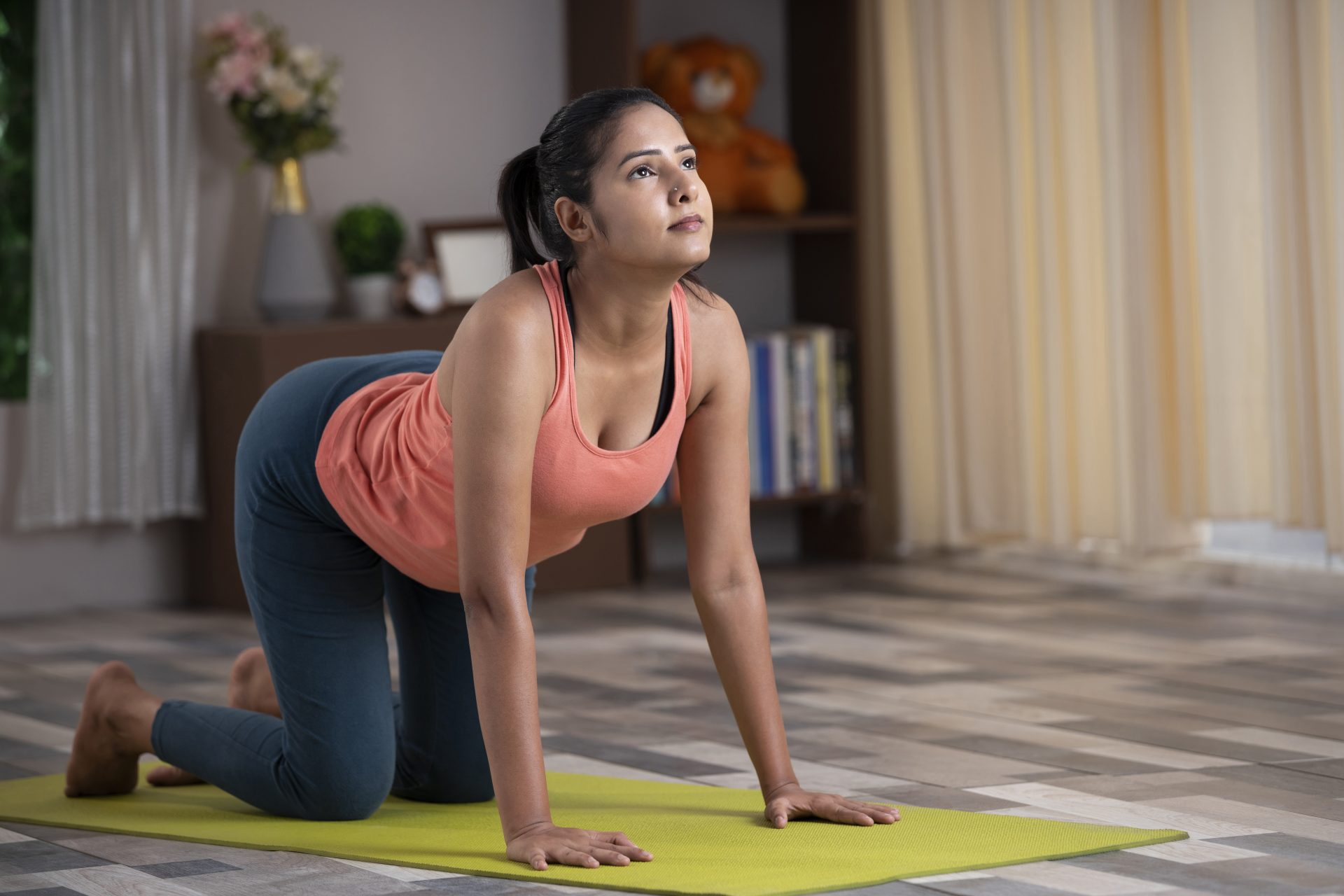A yoga teacher explains the most common yoga mistakes and shares advice on reaping the benefits of a yoga class without risking injury.
There’s no doubt that practising yoga has so many benefits for our health – both physical and mental. One of the great things about yoga is that it’s for everyone, regardless of your fitness level or flexibility. In fact, most poses have several variations so you can make adjustments based on your individual needs and what feels best for your body.
But whether you’re a total beginner or an experienced yogi, there are common mistakes that we may all find ourselves making in a yoga class, and they can prevent us from enjoying the full benefits of the practice, or worse still, lead to injury.
You may also like
Restorative yoga vs yin yoga: what are the differences between the two styles?
5 common yoga mistakes
Fixating too much on the shape of the pose
Firstly, it’s important to remember that there is no such thing as a ‘perfect’ or ‘peak’ pose, explains qualified yoga teacher Caroline Lucas. There is however a ‘perfect pose’ for you.
“Every pose can be broken down, so if you find yourself struggling with a particular pose. Ask the teacher for a variation or consider using props like blocks or bolsters to assist,” Lucas tells Stylist. “Try to be in your own yoga bubble and not copy the person on the mat next to you, as all our bodies are built so differently.”
Of course, correct alignment is important as it will allow you to stretch your body without the risk of injury, but don’t be too focused on what your body looks like or compare yourself to others. It’s more about enjoying the stretch and being aware of how it feels in your body.

Forgetting to breathe
Awareness of the breath is key – you’ve no doubt heard this in a yoga class before and that’s because it’s true. “Observe how you breathe as you move through the session. If you notice you are holding the breath, it’s your body’s way of telling you that you are pushing yourself too far and you either need to take a rest or back out of the pose,” says Lucas.
Your breath is the foundation of the practice and any movement or posture is simply secondary. “Focusing on your breath in yoga has many benefits,” shares Lucas. “It keeps the mind anchored in the present moment and when we link the breath and movement together, that’s when the magic in yoga really begins. The mind becomes quiet, and you will find the practice literally becomes a moving meditation.”
Pushing yourself too much
It’s completely natural to want to challenge yourself and become more flexible when you start practising yoga, but it’s important that you don’t overdo it.
“When you push your body too much, your body will react by protecting itself. Basically, this means it will tighten up more and, as a result, you are likely to become less flexible,” says Lucas.
“Listen to your body and master the art of finding your edge.” This is a place in a pose where you feel challenged while also feeling balanced and at ease – once you find that sweet spot, your body will quite happily open up more. “Resist the urge to rush and allow your body to adapt slowly; over time, your body will reap the benefits,” Lucas says.
You may also like
5 yoga moves you can do at your desk
Skipping the warm up
If you’re late to a yoga class or you’re practicing by yourself at home, it can be tempting to skip the slower, gentler warm-up poses and rush to the more dynamic and active ones.
“Like any type of exercise, warming up in yoga means introducing the body gently to what you want from it,” explains Lucas. “You can warm up through specific warming-up exercises that will bring heat to the body through increased circulation. For instance, practising a sun salutation. You should warm up by doing the simpler poses or flows first and slowly build up to the more dynamic sequences.”

Leaving before savasana
We may think that lying down on our backs at the end of the class offers no real benefit and it’s one part of the practice we tend to rush or simply skip to save time. But savasana is a crucial part of a yoga class, and most yoga teachers recommend holding the pose for at least five minutes.
“Savasana is the portion of the class where you assimilate all the benefits of your practice. If you simply run back to your normal day after a strong practice without practising savasana, your nervous system will most likely be over-stimulated,” says Lucas “and you may end up feeling scattered. When you give yourself time to get grounded and relax, your nervous system gets a chance to absorb the benefits, reset and you will hopefully feel great the rest of the day.”
Images: Getty
Source: Read Full Article
